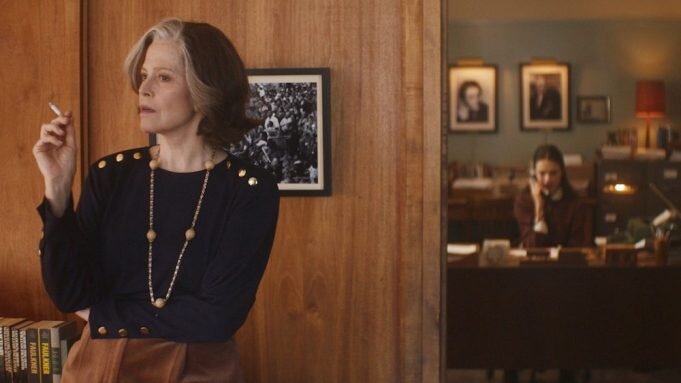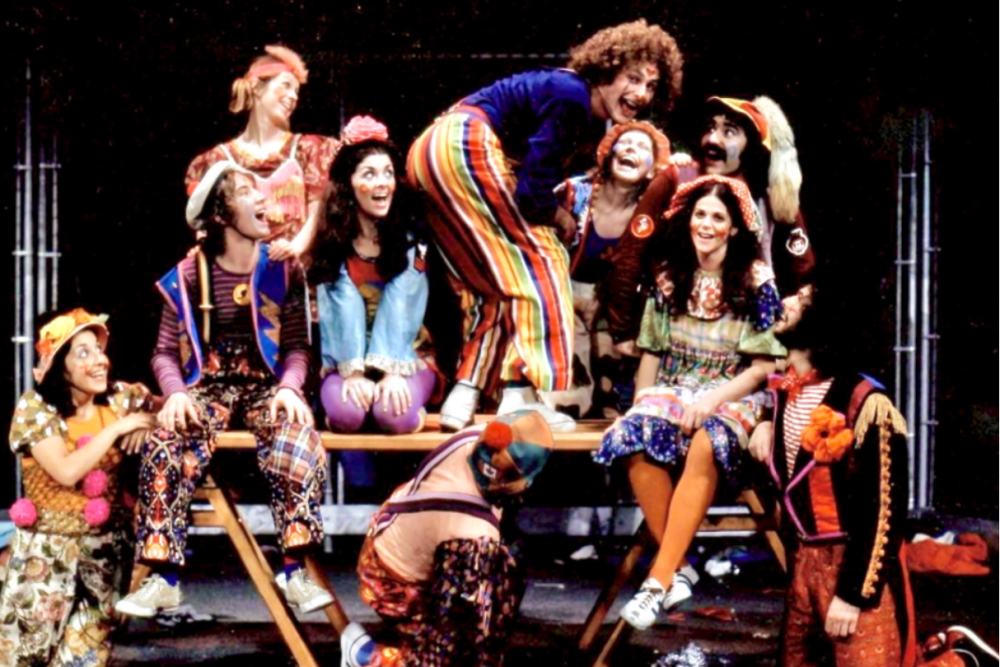Film review: My Salinger Year flashes back to New York City's romantic literary world, in a pre-online era
Memoir of a young woman’s work at an agency has surface charms, but little interior action
VIFF Connects is now streaming My Salinger Year
FOR THOSE OF a certain vintage, it’s somewhat sobering to consider that a film set in 1995 is now a period piece. But that’s exactly the level on which My Salinger Year works the best: the sheer nostalgia of New York City’s literary scene in an era just before mega-bookstores, Kindles, and iPhones.
Not much happens in My Salinger Year, but for some, the opportunity to live in its world for 100 or so minutes will be enough. Such is the surface charm of Canadian writer-director Philippe Falardeau’s film about a young, naive author-wannabe who goes to work as an assistant for legendary literary agent Margaret (Sigourney Weaver). Prepare to be doubly nostalgic if you love the city where it’s set. Think drinks at the Algonquin, dessert at the Waldorf Astoria, and poetry readings in pre-gentrified, pre-smoking-ban Brooklyn cafes—all met with wide-eyed, but somehow empty, wonder by Margaret Qualley’s Joanna Rakoff.
The film follows Rakoff’s memoir of moving to New York to work for literary agent Phyllis Westberg, whose clients included the reclusive JD Salinger and YA star Judy Blume. But it lacks the energy and momentum of the young narrator’s interior life.
The running joke is that Joanna has to hide her desires of becoming a writer from her intimidating boss Margaret, who wants an assistant who won’t be sidetracked by her own dreams of getting published. Weaver plays her with sharp sarcasm, sophistication, and eye-rolling aplomb—just watch her wordless response when her young charge makes an unannounced appearance at one of her long lunches. And hilariously, Margaret abhors technology, banning computers from the office because they “make work for everyone”. The role has been compared to Meryl Streep’s fashion editor in The Devil Wears Prada, but Weaver is far more sly and less broadly comedic here, slowly revealing a softer side.
And so Joanna is tasked with typing form-letter responses to the small army of loners and obsessives who write to Salinger. (In a clever device, we see many of them read their words aloud, addressing the camera directly.) But she can’t stop herself from breaking the rules, crafting elaborate responses as a way of freeing her writing skills—risking the ire of her boss.
Put next to Weaver's, Qualley’s performance comes off all the more vacuous. On one hand this is a coming-of-age story that relies on Joanna’s naivetee. When she falls for her bohemian, older socialist-bookstore boyfriend, we have to wait patiently for her to grow up and realize his dorkishness. But we have to believe there’s a writer waiting to emerge—and all the passion and intelligence that might entail. The aspiration has to go beyond being awed at seeing the glam New Yorker offices. Otherwise, as The Devil Wears Prada did, you have to play this stuff for more laughs. Or like the more recent The Assistant, you have to try to go darker, and convey the exquisite pain of being a young woman whose dreams of a creative career first entail subjugation.
Joanna is left to wait for the drama of “Jerry” calling the Westburg offices and flirting mildly with her on the phone—moments that anyone who’s read about Salinger’s penchant for underage aspiring writers won’t see with the quaintness attached here. (Joyce Maynard has written about her own, much more troubling “Salinger year” as a teen.)
Despite such flaws, My Salinger Year has its pleasures, mostly in the way it takes you back to a time and place that now feels long gone. Then again, that may be nostalgia speaking.













